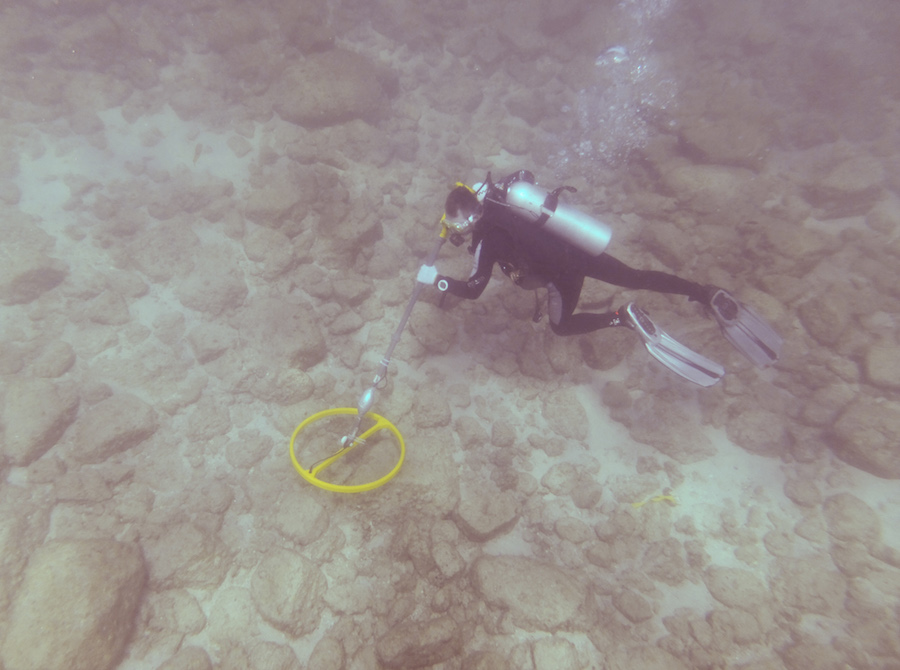Sunken Pirate Ship from Explorer Vasco da Gama's Fleet Discovered

Marine archaeologists think they've discovered a lost Portuguese ship from explorer Vasco da Gama's fleet off the coast of present-day Oman, more than 500 years after it sank in a deadly storm.
A team led by David Mearns, of the U.K.-based Blue Water Recoveries, first located the shipwreck in 1998 using archives and historical documents as a guide. After recent underwater excavations and careful analysis of more than 2,800 artifacts, including cannonballs and rare coins, the researchers are now fairly certain they have found the nau Esmeralda, the doomed ship commanded by da Gama's uncle.
Portuguese navigator Vasco da Gama found a sea route to India in 1498, becoming the first European to reach Asia by sea and ushering in an era of Portuguese imperialism. Da Gama secured a monopoly on the valuable spice trade, terrorizing coastal cities and vessels along the way. (In one infamous story, da Gama torched a pilgrim ship carrying more than 300 Muslims—including women and children —returning from Mecca.) [See Photos of the 500-Year-Old Shipwreck]
During da Gama's second voyage to India (1502-1503), his uncles Vicente and Brás Sodré were in charge of a five-ship squadron. They had specific instructions to provide military cover for friendly trading states on the west coast of India and to disrupt Arabic shipping along the route, Mearns told Live Science, but they disobeyed their orders and instead went to the Gulf of Aden, where they carried out a campaign of piracy.
After sacking and killing everyone on five Arab ships (and keeping much of the loot for themselves), the Sodrébrothers needed to make repairs. They took shelter in a bay at Al-Hallaniyah, the largest of the Khuriya Muriya Islands, located about 28 miles (45 kilometers) off the southern coast of Oman.
"They were friendly with the Arabs [on the island] and trading with them —maybe too friendly with their wives, it seems from the archives," Mearns said.
The Portuguese ships were anchored in a bay that was protected on all sides—except the north. When the local fishermen knew there was a strong wind coming from the north, they told the Portuguese sailors to get on the other side of the island. But, believing their iron anchors to be strong enough to withstand the storm, the Sodré brothers didn't heed the warnings. The wind came, and the ships' moorings were torn away.
Get the world’s most fascinating discoveries delivered straight to your inbox.
Brás Sodré's ship, nau São Pedro, ran hard aground, but Vicente's ship, nau Esmeralda, sank in deeper water, killing him and everyone else on board. [The Top 10 Intrepid Explorers]
Another captain from the squadron recounted the disaster in great detail in a letter to the Portuguese king, and the story has been retold in many histories.
"It was a very rich and well-told story, which is great for archaeology," Mearns said. "You usually don't have that luxury."
That story led Mearns to the northeastern coast of Al-Hallaniyah in 1998. During the initial investigation, he said he found more than 20 large stone cannonballs sitting right on the surface of the seabed. Mearns and his Omani partners then conducted more thorough archaeological surveys and excavations in 2013, 2014 and 2015. They found hundreds of artifacts, including copper-alloy barrels, a number of stone shots, gold coins, West African and Asian ceramic pots and stone beads, he said.
To examine some of the shipwrecks' corroded artifacts, the team turned to high-tech methods. They used CT scanning to identify two silver coins: the Manuel índio, minted in 1499; and the real grosso, minted sometime between 1475 and 1479. Portuguese King Dom Manuel I ordered the índio to be struck after the return of da Gama's first voyage to India, specifically to be used in trade with India. As there is only one other known índio in the world (housed at the National Historical Museum of Brazil), this coin has reached legendary status in the coin-collecting world, Mearns and his colleagues wrote.
CT scans were also used to get a better look at a bell (which was wrested from under a boulder in shallow water) and found that it was inscribed with the numbers "498." The researchers suspect that perhaps the "1" eroded from the manufacture date of 1498; that would chronologically fit with Sodré's squadron, which left Lisbon in 1502.
"It's very possible that that could be the oldest ship's bell ever found in the world," Mearns said. "And it was found less than 100 meters [328 feet] off a shoreline, in a depth of water that you could have snorkeled to. As small as the world is, there are still places left to explore."
The findings were published online March 14 in the International Journal of Nautical Archaeology.
Follow us @livescience, Facebook & Google+. Original article on Live Science.



